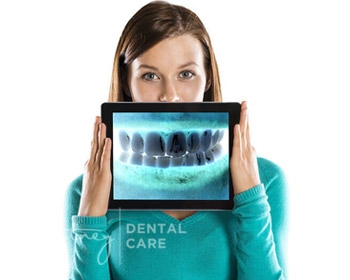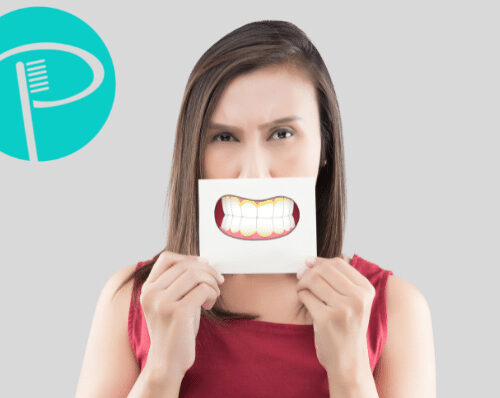Dental X-Ray Examinations

Dental X-Ray, or radiographic examinations, are one of the most important diagnostic tools in the dentist’s arsenal. Radiographs may help detect or confirm problems that are not clearly recognisable during routine examinations.
Furthermore, a timely Dental X-Ray referral may help detect some problems before any symptoms occur, saving patients time, money and unnecessary pain. The problem can then be treated before it becomes more serious, meaning the treatment is likely to be less invasive, require less recovery time, and potentially less expensive.
Conditions that may show up during X-ray examinations include:
- Oral cancer
- Cysts
- Impacted teeth
- Gum disease consequences, such as bone loss
Radiographs are not only used to detect problems, however. They are also routinely performed prior to undertaking some procedures, such as:
- Tooth extraction
- Fitting of braces of removable prostheses
- Placement of bridges and crowns
- Root canal treatments
- And more
Dental X-Ray Imaging
“X-Ray” means the use of radiation to create an image on film or transfer it to a computer screen. As mentioned above, it can help detect various conditions. For example, when tooth decay occurs, it alters the composition of enamel and dentine (the hard tooth structures), which means more X-rays can come through. As a result, tooth decay appears darker on the image than healthy tooth tissues.
Another example is when the root tip of the tooth is destroyed by inflammation, in which case it appears darker on the image.
Do I need an X-ray?
Your dentist will let you know if an X-ray examination is required.
Some of the factors your dentist will consider include your dental history, symptoms, age and overall health. Depending on those parameters, your dentist will determine if you need X-rays, and if so, which types (more on that later) and how frequently. In saying that, if you’re new to the practice and don’t have very recent X-ray images to provide, your dentist is very likely to order a radiographic examination to get a good idea of your oral health. If you do have recent X-rays from a different dental practice, you may choose to authorise the copies and get them sent through to your new dentist.
Unless there are any counterindications, your dentist is likely to recommend regular oral X-rays (frequency will depend on your condition and other factors outlined above). For example, if you have progressing tooth decay or are about to undergo a massive dental treatment, you are more likely to be referred for frequent check-ups.
Children also usually need to get dental X-rays more often than adults to make sure their teeth are developing properly and start using braces when required.
Radiograph types
There are three main categories of radiographs available, and we will briefly review each type.
Bitewings
The unusual name stems from the fact that you have to bite down on a piece of paper or plastic centered on the film. The picture obtained via this method clearly shows crowns of upper and lower teeth, which makes it an ideal tool to confirm and/or detect gum disease and decay, especially between the teeth. In addition, dental “extras” such as crowns (both metal and acrylic), fillings, caries and surrounding bones also show up on films.
Periapical films
These show the entire tooth, including surrounding bone and the root. This technique is usually the first choice for examination of root tips, monitoring and diagnosing bone loss related to gum disease, locating abscesses and cysts, and locating inflammation of the bone which may occur due to root canal infections in the teeth.
Panoramic films
These advanced films are called panoramic for a reason, as they give the complete panoramic view of the entire upper and lower jaws. The dentist may order these images to obtain an overall view of a patient’s teeth, which can be particularly useful for detecting:
- Jaw injury and trauma
- Wisdom teeth problems
- Presence of abnormal growths in the jawbone
In addition, panoramic films are often used to monitor developing teeth in children – this may help your dentist to decide whether braces or other corrective measures are required.
It is important to keep in mind that while panoramic films provide a great overview, they do not show as much detail as the other two types. That means that either bitewing or periapical films are often ordered together with panoramic films to obtain the best possible overview of a patient’s condition.
Do I need to worry about radiation exposure?
There is a known health risk associated with radiographs, but it is extremely low. Modern dental practices comply with strict Australian standards when it comes to using X-ray equipment, so the risks are kept at minimum. It is important to recognise, however, that as with all medical treatments, it is all about assessing risk vs benefit.
To put things in perspective, radiation you receive from one dental X-ray examination is significantly less than that on any given background radiation such as radiation from the atmosphere. It is also less than you would experience on a long-haul flight.
Pregnancy and dental X-rays
In fact, risks associated with modern radiographic examinations are so low that pregnant women can still get dental X-rays. The failure to treat oral disease can be much more dangerous for the unborn child compared to getting an X-ray exam. Additional precautions, such as use of protective lead aprons, further limit the foetal exposure.
The best approach, however, is to plan your pregnancy and get a thorough dental check-up in advance. This allows to avoid or at least reduce the need for a radiographic examination during your pregnancy.
Questions?
If you have any further questions, please do not hesitate to contact Putney Dental Care, as we are always happy to provide further guidance and reassurance.
New to our practice? Call us today to book your consultation and a comprehensive dental check-up.
Dental Crowns and Bridges Home Dental Care: How to Clean Your TeethLatest from the Dental Blog
 20 Mar 2016
20 Mar 2016
Have Your Chocolate and Eat It Too!
While we all know that eating too many sweets can ruin our diets, often we forget that too many sugary…
 26 Feb 2016
26 Feb 2016
Putney Dental Care School Visits
Since opening, Dr. Danielle and Kaitlynn have been providing school talks within the Ryde region to educate the students on…
 24 May 2022
24 May 2022
Tartar vs Plaque: What’s the Difference?
Plaque is the thin film that accumulates on your teeth every day after eating and drinking. If plaque is not…
